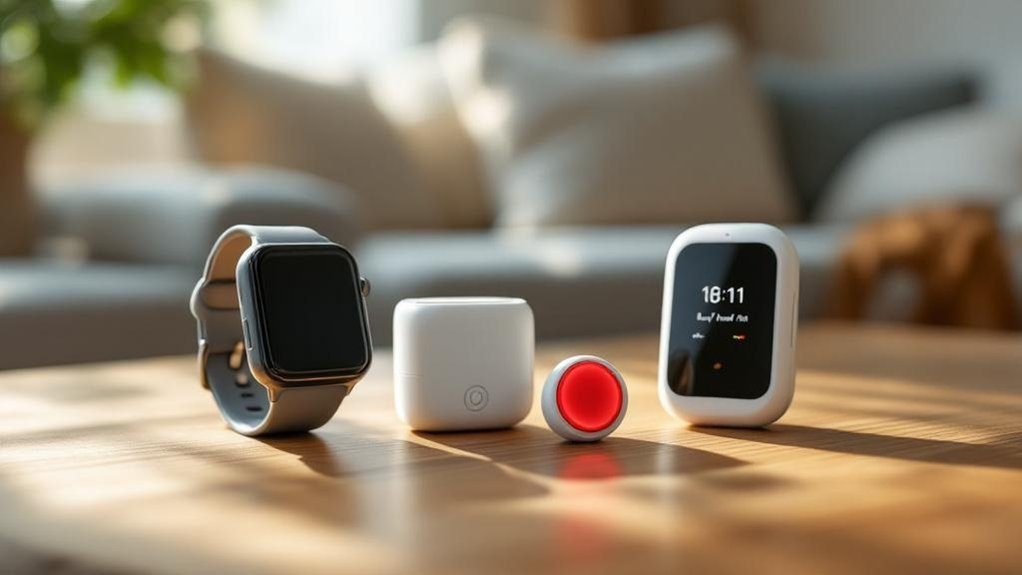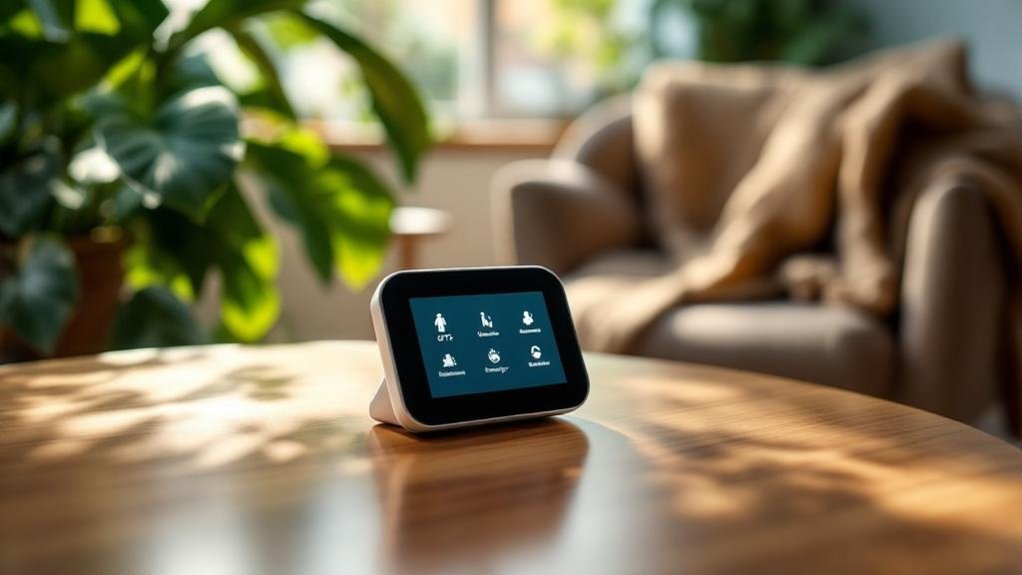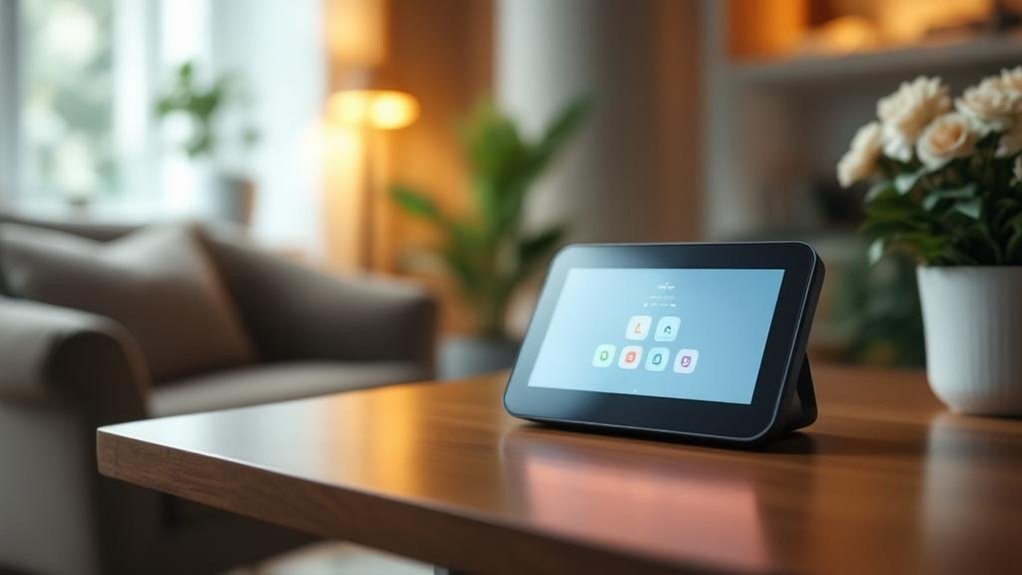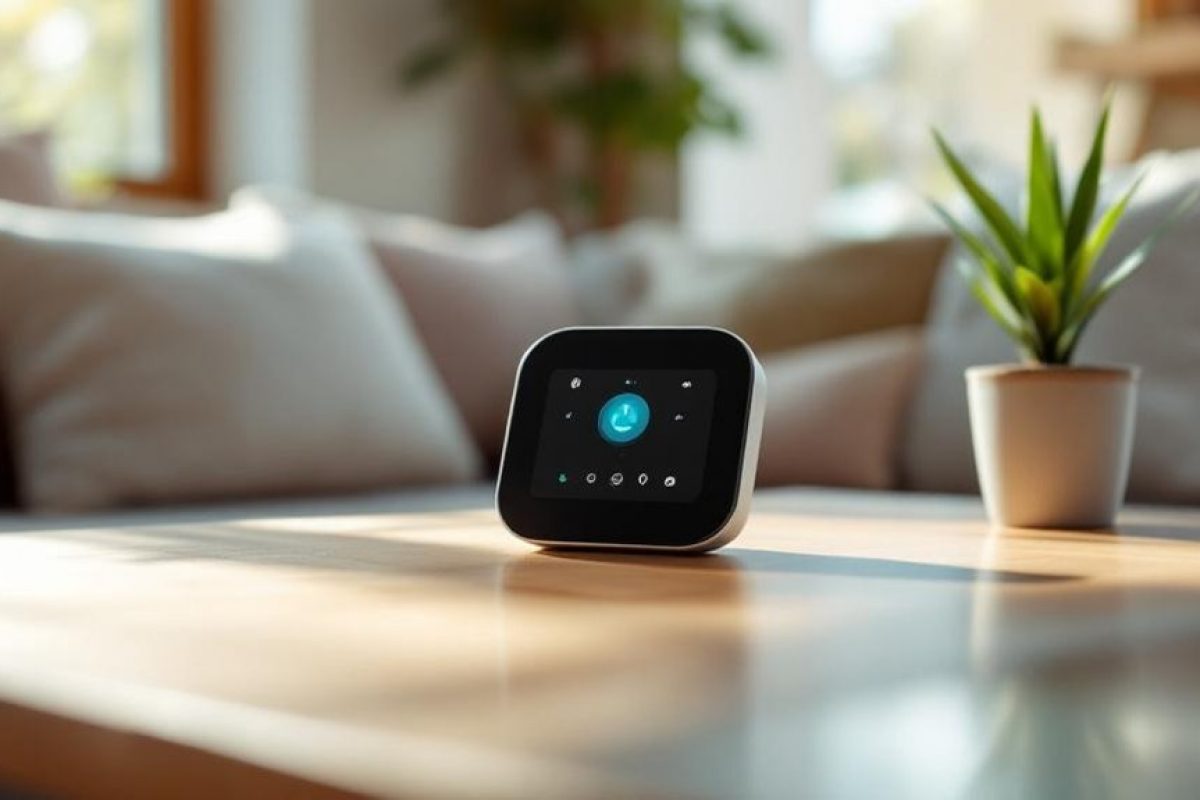When choosing senior monitoring devices, contemplate the type of device, such as in-home systems or mobile options with GPS tracking. Look for 24/7 monitoring services for immediate response in emergencies. Coverage matters, especially in rural areas with limited connectivity. Key features like fall detection, two-way communication, and ease of use can greatly impact safety. Finally, compare costs and subscriptions to find the best fit for your needs. You’ll discover more important factors to contemplate ahead.
Key Takeaways
- Consider the device type, whether in-home, mobile, or wearable, based on the user’s lifestyle and mobility needs.
- Evaluate the monitoring and response services offered, ensuring 24/7 professional support is included for emergencies.
- Assess coverage options and network reliability, particularly in relation to urban versus rural living conditions.
- Look for user-friendly interfaces and essential features like fall detection, two-way communication, and GPS tracking for enhanced safety.
- Compare costs, subscription fees, and cancellation policies to find a plan that fits the budget without hidden charges.
Device Types and Their Functions

When considering senior monitoring devices, it’s essential to understand the various types available and how they function to meet specific needs.
You’ll find in-home medical alert systems, which often come with base stations and wearable help buttons for indoor safety. Mobile medical alert devices cater to active seniors, offering GPS tracking for outdoor protection. Bay Alarm Medical offers an excellent value with mobile app features like GPS tracking and alert history, making it a top choice for many families. Additionally, many families appreciate the personalized care options provided by agencies like Young at Heart Home Care when integrating these devices into their loved ones’ daily lives.
When you explore device comparisons, consider the versatility of wearables like smartwatches, which integrate fall detection and emergency contact features. User reviews can help you gauge the effectiveness of button-only alert devices, which provide straightforward access to help. Advanced AI systems enhance safety through passive monitoring, but they might be pricier. Each option serves distinct purposes, ensuring you find the right fit for your loved ones.
Monitoring and Response Services
Understanding the types of senior monitoring devices is just the beginning; the effectiveness of these devices largely hinges on the monitoring and response services they provide.
With 24/7 professional monitoring, trained emergency medical dispatchers are ready to assist at a moment’s notice, ensuring immediate emergency coordination. They’ve access to users’ locations and contacts, enabling swift action when needed. Medical alert systems are particularly recommended for older adults or those with serious health conditions, ensuring timely assistance when it matters most. Additionally, 24/7 home care services can provide continuous supervision, enhancing safety for seniors with critical health conditions.
You can customize emergency response options to fit your family’s needs, like pre-setting contacts or using coded lock boxes for easy access. Rapid response times, often within 10 to 20 seconds, are essential, especially for fall detection systems that automatically alert help.
Ultimately, these services enhance safety and peace of mind for both seniors and their caregivers.
Coverage and Mobility Options

As you explore senior monitoring devices, it’s crucial to evaluate coverage and mobility options that best fit your lifestyle.
Consider geographic considerations, as cellular network reliability can vary greatly between urban and rural areas. Mobile devices often utilize 3G/4G/5G networks, but if you’re in a remote location, connectivity might be limited. Additionally, some Medicare Advantage plans provide free emergency response options for seniors, which can enhance your overall safety and peace of mind. Respite care can also be a valuable resource, allowing caregivers to take a necessary break while ensuring that seniors receive high-quality care in a safe environment.
Home-based units provide stable coverage through landlines or WiFi but restrict mobility. Additionally, confirm the device has features like GPS tracking for safety when you’re out and about. Remember that some systems may not support international roaming, so check service area limitations if you travel frequently.
Key Features to Consider
Choosing the right senior monitoring device involves carefully considering key features that enhance safety and convenience.
Look for user-friendly interfaces that make it easy for seniors to navigate their devices. Crucial features like fall detection and emergency alerts guarantee prompt assistance during critical situations. Additionally, the importance of senior monitoring devices lies in their ability to ensure safety, security, and timely medical intervention, thereby supporting independence while ensuring care. Personal Care Services can greatly complement these devices by providing assistance with daily living activities, ensuring that seniors have comprehensive support.
Two-way communication allows seniors to connect directly with caregivers, improving response effectiveness. GPS tracking can be a lifesaver for those prone to wandering, while long battery life reduces recharging hassles.
Additionally, consider health monitoring capabilities such as essential sign tracking and medication reminders, which support overall well-being.
Device Usability and Design

When selecting a senior monitoring device, usability and design play a significant role in guaranteeing that the technology fits seamlessly into daily life. Opt for devices with user-friendly interfaces that are easy to navigate, minimizing confusion for seniors. Look for ergonomic designs, like lightweight, comfortable wearables, that encourage regular use. Features such as large, tactile emergency buttons and high-contrast displays cater to various dexterity and vision levels, enhancing accessibility. Choose devices with clear instructions and adjustable settings to support independent usage. Consistent alert systems and non-invasive monitoring guarantee safety without intruding on personal space. By prioritizing usability and thoughtful design, you can empower seniors to maintain their independence and well-being, while also ensuring that the devices provide necessary health monitoring for their overall safety. Additionally, incorporating features that promote companionship care can further enhance emotional support and reduce feelings of isolation for seniors.
Cost and Subscription Considerations
Understanding the costs associated with senior monitoring devices is essential to making an informed choice. Monthly subscription fees typically range from $20 to $60, covering 24/7 professional monitoring. Keep in mind that features like mobile and fall detection may incur additional charges. Some plans offer subscription flexibility with no hidden fees or activation costs, while others may charge up to $200 for equipment and activation. Look for options that include free shipping or activation to save upfront costs. Consider your budget annually, as costs can range from $240 to $1,200. Additionally, in-home systems typically have a lower monthly cost compared to mobile systems, making them a more budget-friendly option for some users. Always compare cancellation policies and look for discounts for multiple users to guarantee you select the best service for your needs and those you care for. A commitment to exceeding industry standards in home care services can also influence the value you receive from your chosen monitoring device.
Frequently Asked Questions
How Do I Choose the Right Device for My Loved One?
When choosing the right device for your loved one, consider the essential device features and a user-friendly interface. Prioritize comfort and ease of use to guarantee they feel secure while maintaining their independence.
Can These Devices Be Customized for Specific Health Needs?
Yes, these devices can be customized with features tailored to specific health needs. You can choose health tracking options that monitor essential signs, medication reminders, and alerts, ensuring personalized care for your loved one’s unique situation.
What Happens if the Device Battery Dies?
If your device’s battery dies, it won’t function, risking emergency alerts. Make certain you know battery replacement options and follow emergency protocols to protect those you care for and maintain their safety and well-being.
Are There Any Hidden Fees With Monitoring Services?
Yes, there can be hidden costs with monitoring services. You’ll want to check for service charges like activation fees, cancellation penalties, and extra costs for features. Always read the fine print before committing.
How Can I Ensure My Privacy With These Devices?
To guarantee your privacy with these devices, choose options featuring strong data encryption and always prioritize user consent. This way, you protect sensitive information while maintaining the dignity and comfort of those you care for.
Conclusion
When choosing a senior monitoring device, it’s essential to weigh the various factors we’ve discussed. Think about the device type, the services offered, and how mobile it is. Consider the features that matter most to you and the device’s ease of use. Don’t forget to factor in the cost and any subscription fees. By evaluating these elements, you can find the right device that guarantees safety and peace of mind for your loved ones.





